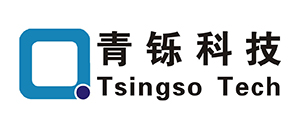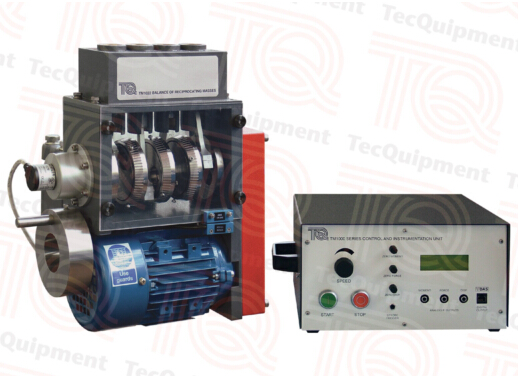Bench-mounted model four-cylinder engine with control and instrumentation unit that demonstrates the primary and secondary forces and moments when balancing reciprocating masses.
Key features
• Model four-cylinder engine assembly held on a cantilever supported on a bench-mounted pillar
• Includes a control and instrumentation unit to process the force and moment signals – this unit also has an electronic drive control, to adjust and display the engine speed accurately
• Shows both primary and secondary forces and moments and how to balance them
• Simulates one-, two- and four-cylinder engines
• Variable crank angle settings, for a range of tests
• Highly visual, ideal for classroom demonstrations
• TD1022V comes with VDAS® Onboard featuring data acquisition via USB
• VDAS® data acquisition works with software to show dynamic force and moment waveforms for popular engine arrangements and compare them with theory
Description
A bench-mounting model four-cylinder engine that shows primary and secondary forces and moments in reciprocating masses and how to balance them. This product is an excellent follow-on from the Static and Dynamic Balancing equipment (TM1002).
A robust support pillar fi xes to a suitable table or bench (not supplied) with a low natural frequency. The pillar holds a cantilever that holds a model four-cylinder engine. The model engine has a crankshaft, connecting rods, bushes (as big-end bearings), pistons and a cylinder block. A separate control and instrumentation unit (included) controls a motor that turns the engine crankshaft.
The crankshaft has adjustable sections. Students can rotate each section relative to the others to change the crank angles.
The crankshaft includes a sensor that works with the control and instrumentation unit to measure and display engine speed. It also helps to give a trigger output at top dead centre of the fi rst piston.
The supporting pillar fi xes to a workbench, so the engine’s centre of mass is on the cantilever axis. Strain gauges on the cantilever detect the bending and torsional strains. The gauges connect to VDAS® Onboard. A USB cable (supplied) connects from the back of the unit to a suitable PC (not supplied) running TecQuipment’s VDAS® software that captures, records and displays data.
Students fi rst fi nd the engine’s resonant speeds. They then experiment with diff erent engine arrangements to understand balancing and how to allow for unbalanced reciprocating masses.
A hinged transparent guard with a safety interlock protects students from the moving crankshaft.
Learning Outcomes
• Primary and secondary forces and moments in popular engine confi gurations: one, two and four-cylinder
• Primary and secondary forces and moments for diff erent crank settings
• Comparing measured force and moment wave forms with theoretical results


